Displaying items by tag: Belfast Lough Yachting Conference
Belfast Lough Yachting Conference Replaces NHC with YTC Rating System
Handicap systems are sometimes the stuff of controversy. So what will transpire when Belfast Lough Yachting Conference replaces the NHC system with the Royal Ocean Racing Club YTC (Yacht Time Correction) system remains to be seen.
Cockle Island Boat Club at Groomsport on the south side of Belfast Lough has notified its members of the change and provided explanatory information about the new system.
An introduction can be found on RORC Rating home page, rorcrating.com, by opening Services and clicking RYA YTC. The YTC application process is free and can be found at ytc.rorcrating.com.
BLYC is a group that encompasses all the yacht clubs on Belfast Lough and Larne Lough, and its primary aim is to look after scheduling the regattas that each club hosts to try to prevent clashing events.
The RORC website explains, “Since the pandemic, there has been a boost in numbers of people getting afloat – mostly sailors relatively new to the sport – and the RYA and the Royal Ocean Racing Club (RORC) are keen to encourage as many keelboats and cruiser-racer sailors as possible to enjoy racing at their clubs or local regattas. Recognising the need for and current lack of an entry-level rating system, the Royal Yachting Association (RYA) and RORC have joined forces with the South West Yacht Time Correction Factor (YTC) rating system to develop and roll out a new initiative: the RYA YTC, powered by RORC Rating”.
“YTC has been developed over recent years by a group of volunteers, initially based in Falmouth, but now more widely spread across the South West, to rate the wide variety of cruiser/racer yachts to be found racing in clubs so that they can race against each other easily, competitively and fairly”.
CIBC says the boat information required includes manufacturer's data - dimensions, weights, keel type, propellor, and measured sail dimensions - main sail and head sail for white sail races. If you wish to participate in both white sail and unrestricted races, you will have to have your spinnaker measured and apply for a second YTC.
CIBC has arranged a sail measurement workshop in the Boathouse on Saturday 18th, March, which Ken Walsh and Jimmy McKee will facilitate. There is the possibility of a second workshop on Saturday, 1st April, and help with the application will be available for CIBC members, who are asked to inform the Hon Secretary at [email protected] if they wish to attend the workshop
It is important to note that the Race Officer will assign a boat which enters a BLYC regatta without a YTC a YTC.
Belfast Lough Regatta Dates for 2012
#BELFAST LOUGH - Provisional dates for the 2012 Belast Lough Yachting Conference (BLYC) Regattas have been announced.
The BLYC encompasses all yacht clubs on Belfast Lough and Larne Lough and co-ordinates their individual events.
The interim schedule for 2012 runs to nine events from Saturday 9 June to Saturday 25 August:
- Sat 9 June - Royal Ulster Yacht Club
- Sat 23 June - Ballyholme Yacht Club
- Sat 7 July - Holywood Yacht Club
- Sat 21 July - East Antrim Boat Club
- Sat 28 July - County Antrim Yacht Club
- Sat 4 August - Cockle Island Boat Club
- Sat 11 August - North of Ireland Yacht Club
- Sat 18 August - Donaghadee Sailing Club
- Sat 25 August - Carrickfergus Sailing Club





























































